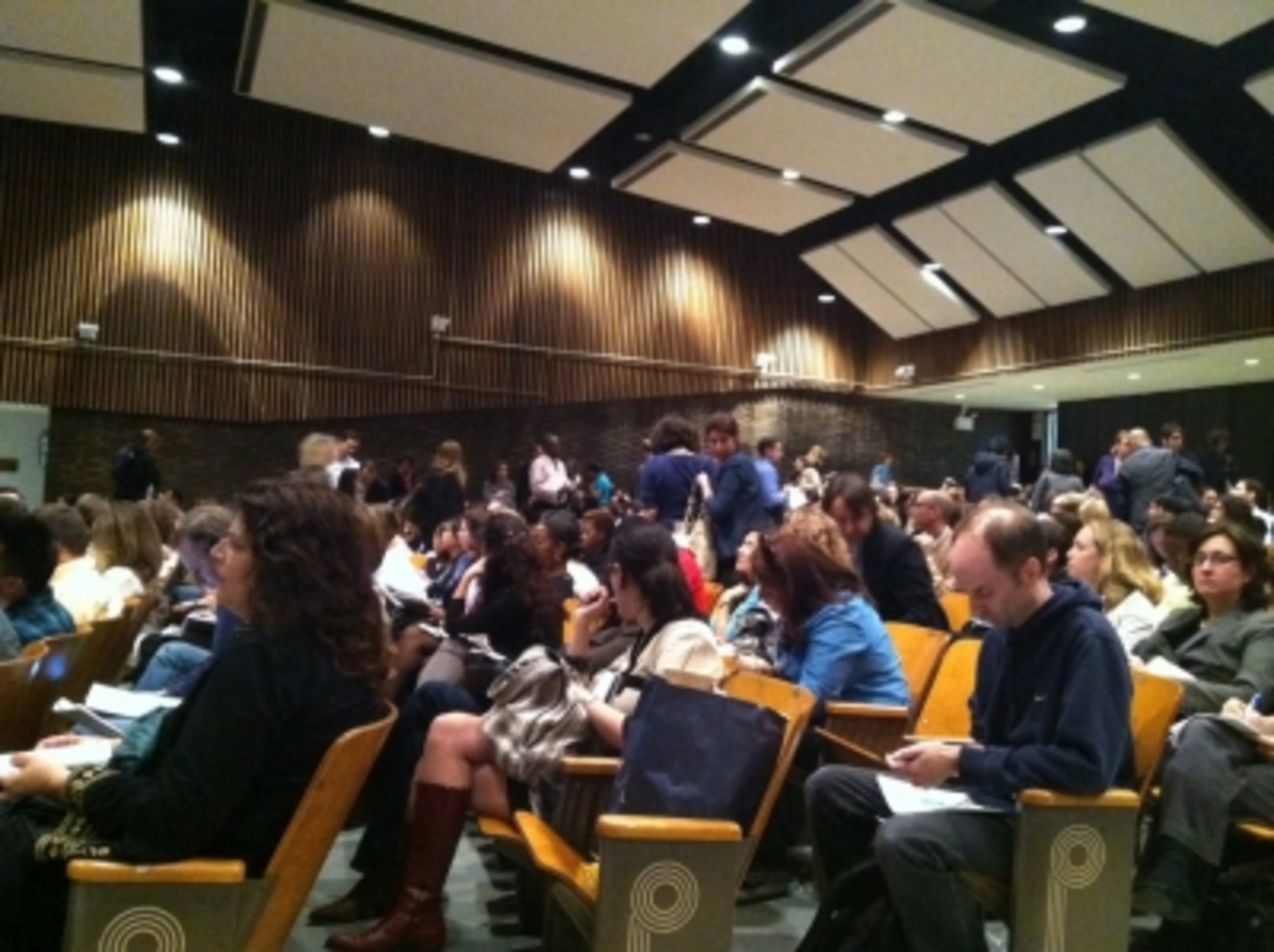Standing room only at G&T info session

A standing-room-only crowd greeted Department of Education presenters at the first of six Gifted & Talented information sessions, held Oct. 5 on the Upper West Side. It was a "friendly, lively and through description of the G&T application process," according to Robin Aronow of School Search NYC, with three DOE representatives speaking for more than an hour, and answering parents' questions for another half-hour.
Virtually all of the information presented is detailed in the G&T Handbook, hardcopies of which were available that night (before they ran out) as well as on the DOE's G&T webpage. The handbook describes the process, includes frequently asked questions, an admissions timeline and a practice OLSAT (Otis-Lennon School Ability Test) by age. The OLSAT is one of two measures that will be administered to children applying for kindergarten through 3rd grade, along with the BSRA (Bracken School Readiness Assessment). The DOE will be looking for a new assessment next year when the current contract with the testing company, Pearson, expires.
There are three G&T sessions remaining: Oct. 11 in Queens, Oct. 12 and 18 in the Bronx and Oct. 18 in Brooklyn. Is it worth attending? Probably not, if you read the handbook carefully, but if you like to hear information directly from the enrollment office or have additional questions, you might benefit.
"You can never hear it enough so that it sinks in," one parent told Robin Aronow. Another said: "It was a waste of time. All the information is in the handbook."
Yet a third pointed out that the most important thing he heard that was not in the handbook was that the questions on the OLSAT can only be read once.
Here's a recap of some other important points:
- Registration : Register for the January or February tests by Oct. 28, online or in person at an enrollment office. Keep a copy of your registration receipt.
- Teaching and Curriculum : There is no standardized G&T curriculum. All teachers much be trained in teaching gifted students.
- Non-English speakers : The test is given in nine languages in addition to English. Your child should test in the language he is most accustomed to hearing.
- Age of test-takers : Children born in 2006 or 2007 will take the test corresponding to kindergarten and 1st grade. Children born in 2004 or 2005 who are not in public school may take the test based on their current grade rather than their birth year. According to the DOE enrollment office, "All students are tested according to birth year. Students born in 2006 or 2007 can only be placed in first grade and kindergarten respectively. Students born in 2004 or 2005 can be placed based on their current grade."
- Scoring the tests : Children's percentile scores on both measures are based on a national norm. Children are compared to others born within a three month age span.
- Who are the testers? NYC early childhood teachers who are experienced with helping children settle into the test . The same person administers both tests which last 45-75 minutes, depending on the child.
- Students with an IEP may get special acccommodations such as larger pictures. As the test is not timed, there are no extra time considerations. If a child is color blind you should contact the Assessment Office ahead of time or inform the test supervisor. You'll need a doctor's note.
- Testing for older grades: Entry into G&T 4th or 5th grade (if the school goes beyond 5th grade) has been based on standardized test scores. However, because of the late test results the past two years, the DOE is considering another procedure.
- Should I prep my child? Not according to the DOE enrollment officials who advise against over-prepping. The practice test in the pamphlet should be enough to orient your child.
Looking for more information? Make sure to read the handbook, And, if you attend a session, please comment on what you learned!
Please Post Comments